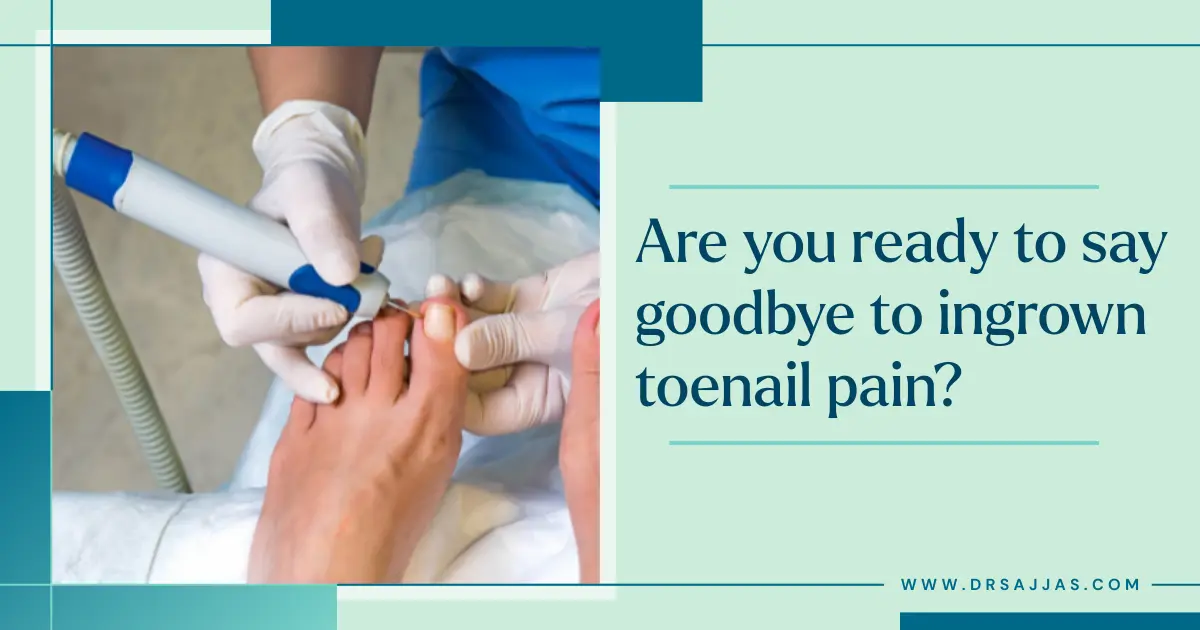
Nail surgery may sound intimidating, but it is a standard procedure that helps treat various nail conditions. Whether it’s an ingrown nail or a fungal infection, nail surgery can relieve and improve overall nail health. This guide will walk you through what to expect before, during, and after the surgery.
When is Nail Surgery Necessary?
Nail surgery becomes necessary when non-surgical treatments fail to resolve nail issues. Common conditions include:
Ingrown toenails: A painful condition where the nail grows into the surrounding skin.
Nail infections: Chronic fungal or bacterial infections that don’t respond to topical treatments.
Trauma: Nail injuries that require surgical intervention.
Abnormal nail growth: Conditions like pincer nails, where the nail curves abnormally.
If you’re suffering from any of these problems, nail surgery might be the best option for long-term relief.
Types of Nail Surgery
There are several types of nail surgeries, depending on the condition:
Partial Nail Avulsion: This involves removing a part of the nail, usually in cases of ingrown toenails.
Total Nail Avulsion: The entire nail is removed if the infection or damage affects the whole nail.
Matricectomy: In recurring ingrown toenails, the nail matrix (responsible for nail growth) may be removed to prevent the nail from growing back.
Your healthcare provider will suggest the best type of surgery based on the severity of your condition.
What to Expect Before Surgery
Your healthcare provider will explain the procedure in detail before the surgery. You may be required to stop certain medications, especially if they affect blood clotting. Most nail surgeries are performed under local anaesthesia so you will remain awake, but the area will be numb. Ensure that you inform your doctor of any allergies or medical conditions beforehand.
The Nail Surgery Procedure
The procedure itself is quick, often lasting between 30 to 60 minutes. Here’s a breakdown of what happens during the surgery:
Local Anesthesia: The affected toe or finger is numbed.
Nail Removal: Depending on the procedure, either part or all of the nail is removed.
Cleaning the Area: Any infection or debris is cleaned thoroughly.
Bandaging: Once the surgery is complete, the area is dressed with sterile bandages to prevent infection.
While the surgery is generally pain-free due to anaesthesia, you might feel some pressure during the procedure.
Post-Surgery Care
After the surgery, following your doctor’s care instructions carefully is important. These usually include:
Resting the area: Avoid putting pressure on the affected toe or finger for a few days.
Keeping the bandage clean: Change the dressing as instructed to avoid infection.
Pain management: Over-the-counter painkillers are usually sufficient to manage post-surgery discomfort.
Watch for signs of infection: Redness, swelling, and pus are signs of infection. Contact your doctor if these occur.
Healing typically takes a few weeks, depending on the type of surgery. Partial nail avulsion may heal faster, while total nail avulsion could take longer.
Potential Risks and Complications
Like any surgical procedure, nail surgery has risks. However, complications are rare when performed by a trained professional. Possible risks include:
- Infection
- Bleeding
- Nail regrowth deformity
- Allergic reaction to anaesthesia
Always follow up with your healthcare provider to ensure a smooth recovery and to address any concerns.
Final Thoughts on Nail Surgery
Nail surgery, while not glamorous, is a safe and effective way to treat chronic nail issues. Most patients experience significant relief and improved quality of life with proper care and attention. If you’re dealing with persistent nail problems, consult a specialist to discuss whether surgery is the right option.



